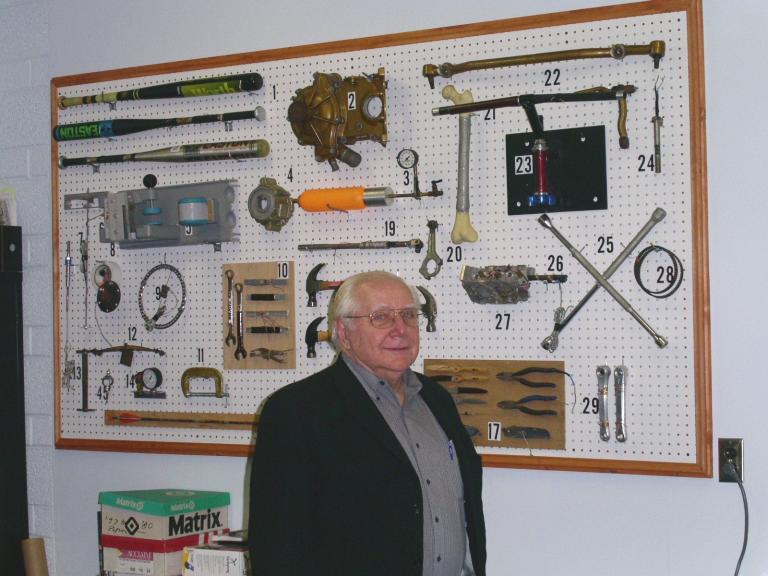
Women are definitely changing the face of engineering, and they may be changing women's choice in footwear soon, too. Four students in Dr. Henry Kowalski's Experimental Mechanics Senior Capstone class decided to investigate the loads (physical stress) exerted by different types of shoes on a human heel and ankle.
The answers they found reinforce what women have known for decades - high heels are hard on your feet. And now there is scientific documentation. Amanda Diver of Macomb, Mich., Brie Conner of Kalamazoo, Mich., Amanda Yakel of Brighton, Mich., and Kurt Makiewicz of Dayton, Ohio, used their collective engineering education to complete the real-world based project.
To obtain their results, the team simulated a walking stride and measured the forces exerted on a load cell, a device designed to indicate force. They compared the load results of a tennis shoe and high heel shoe.
Their testing methods included building the apparatus used to simulate the step motion and calibrating load cells for both the ankle and heel on an oscilloscope that was used to plot the force results. Test data came when they dropped the apparatus from a height of two inches off the load cell multiple times for each type of shoe.
The team was able to collect and analyze the data from the oscilloscope, which showed that 190 pounds of force was exerted on the heel wearing a high heeled shoe with 112.4 pounds of force on the ankle. With the tennis shoe there were 180 pounds of force exerted on the heel and only 86.4 pounds of force on the ankle - representing 26 pounds of force less than the high heeled shoe.
They concluded that the force exerted on the ankle wearing the tennis shoe was significantly lower than the force from the high heel, although the force exerted on the heel (plate load cell) was different but not dramatically different.
From the results of their tests, the team determined that the benefits of wearing a tennis shoe outweigh the aesthetics of high heels because the ankle experiences less force. They said future test considerations include testing aftermarket insoles in various shoe types to see if they reduce load on the ankle and creating a fixture to release the lever arm at the exact same height and with the same release motion.
In the meantime, their advice is WEAR TENNIS SHOES!
Written by Dawn Hibbard
810-762-9865
dhibbard@kettering.edu